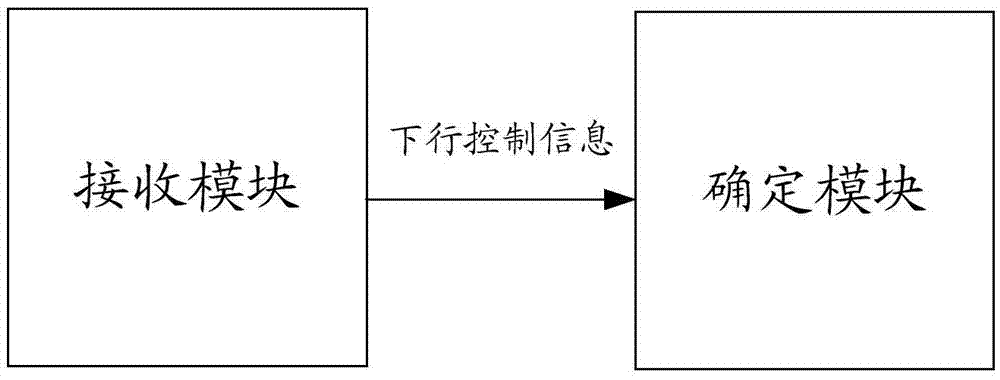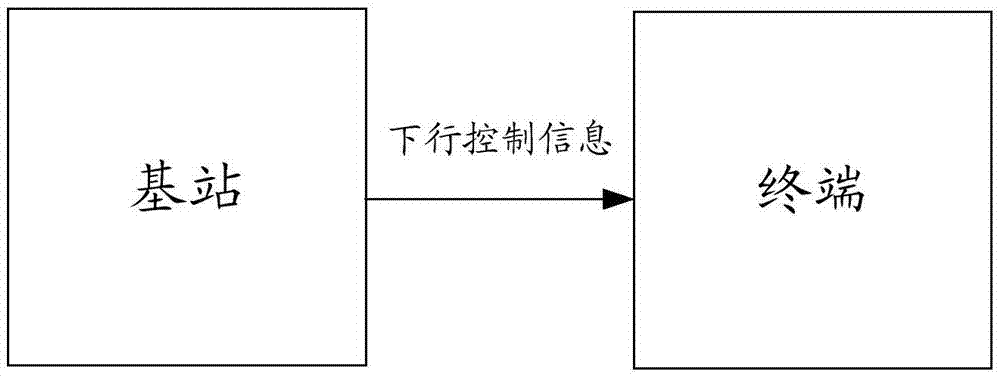Method, apparatus and system of determining coded modulation parameter
A coding modulation and parameter technology, applied in the field of Internet of Things, can solve the problem that the coding modulation parameter method cannot be applied and cannot be correctly encoded and decoded.
- Summary
- Abstract
- Description
- Claims
- Application Information
AI Technical Summary
Problems solved by technology
Method used
Image
Examples
no. 1 example
[0259] In the first embodiment, the terminal receives the downlink control information sent by the base station, and according to the resource allocation field and the MCS field I in the downlink control information MCS Determine any one or more of: TBS, number of repetitions, redundancy version.
[0260] Wherein, the downlink control information includes the MCS field I MCSand resource allocation fields.
[0261] Wherein, the resource allocation field is used to indicate the RU-based resource allocation of a TBS, and the MCS field is used to indicate the coding and modulation mode.
[0262] Among them, RU is a time-frequency two-dimensional resource including Nsc consecutive frequency domain subcarriers and Nsym consecutive OFDM symbols in the time domain, each RU includes NscNsym0 resource elements, and Nsc and Nsym are integers greater than or equal to 1.
[0263] Among them, according to the resource allocation field and the MCS field I in the downlink control informatio...
no. 2 example
[0285] In the second embodiment, the terminal receives the downlink control information sent by the base station, and determines any one or more of the following according to the TBS indication field and the resource allocation field: MCS, number of repetitions, and redundancy version.
[0286] Among them, any one or more of the following are determined according to the TBS indication field and the resource allocation field: MCS, number of repetitions, and redundancy version include:
[0287] The terminal determines the number Nru of RUs occupied by a TB according to the resource allocation field; the terminal determines any one or more of the following according to the TBS indication field and the number Nru of RUs occupied by a TB: MCS, number of repetitions Nrep, and redundancy version RV.
[0288] The number Nru of RUs occupied by a TB is the number of RUs occupied by a TB when performing one HARQ transmission, or the number of RUs occupied by a TB before repeated processin...
no. 3 example
[0293] In the third embodiment, the terminal receives the downlink control information sent by the base station, and the terminal determines any one or more of the following according to the MCS in the downlink control information and the joint coding field of the predefined transmission information and the number of RUs occupied by one TB: TBS, repetition Times, redundant versions.
[0294] Among them, the terminal determines any one or more of the following according to the MCS in the downlink control information, the joint coding field of the predefined transmission information, and the number of RUs occupied by one TB: TBS, repetition times, and redundancy versions include:
[0295] The terminal determines the number Nru of RUs occupied by a TB according to the resource allocation field; the terminal determines any one or more of the following according to the MCS and the joint coding field of the predefined transmission information and the number Nru of RUs occupied by a T...
PUM
 Login to View More
Login to View More Abstract
Description
Claims
Application Information
 Login to View More
Login to View More - R&D
- Intellectual Property
- Life Sciences
- Materials
- Tech Scout
- Unparalleled Data Quality
- Higher Quality Content
- 60% Fewer Hallucinations
Browse by: Latest US Patents, China's latest patents, Technical Efficacy Thesaurus, Application Domain, Technology Topic, Popular Technical Reports.
© 2025 PatSnap. All rights reserved.Legal|Privacy policy|Modern Slavery Act Transparency Statement|Sitemap|About US| Contact US: help@patsnap.com



